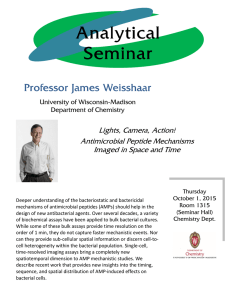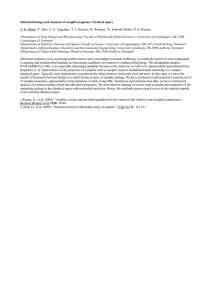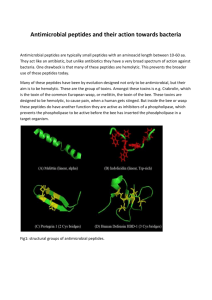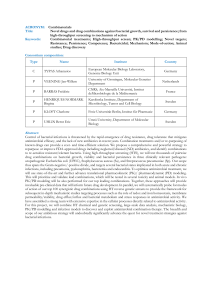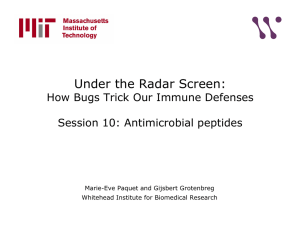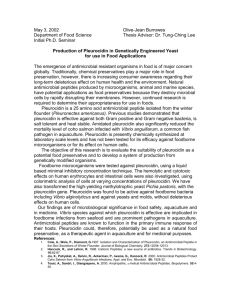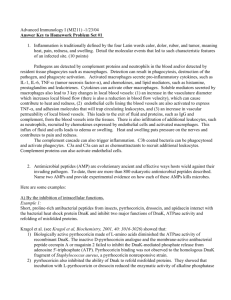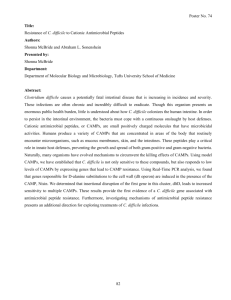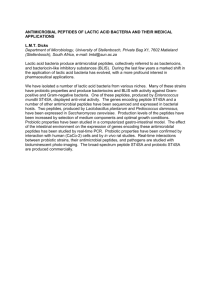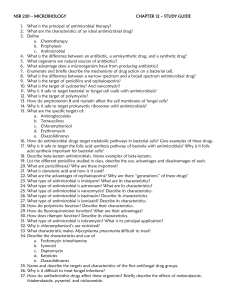Human Genome Project
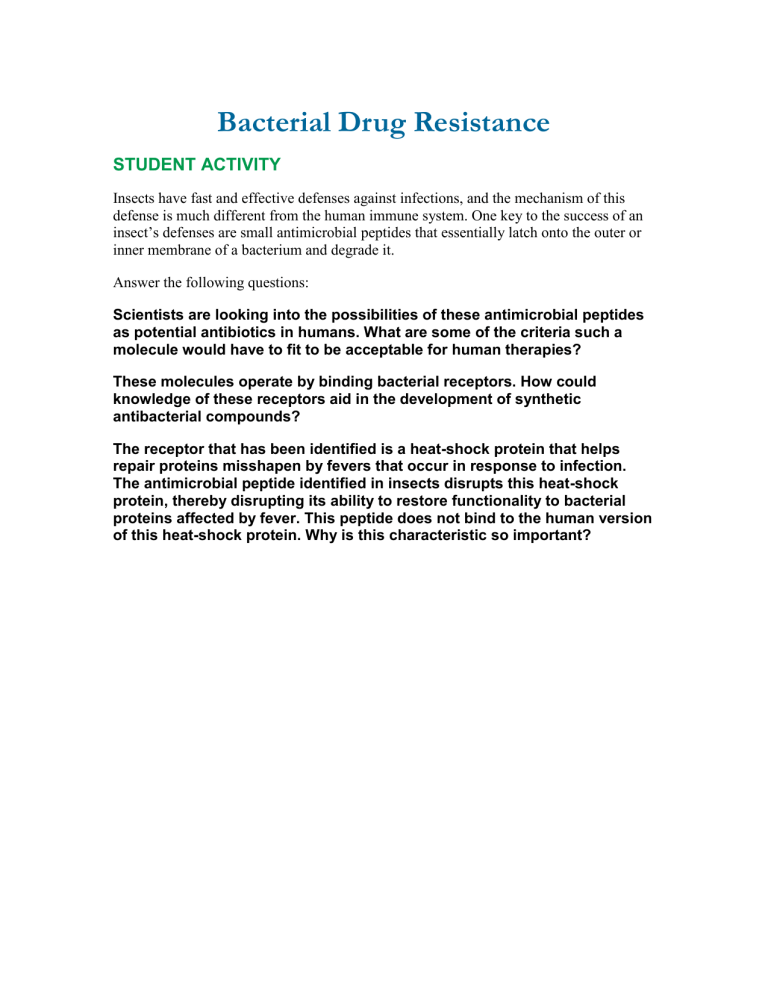
Bacterial Drug Resistance
STUDENT ACTIVITY
Insects have fast and effective defenses against infections, and the mechanism of this defense is much different from the human immune system. One key to the success of an insect’s defenses are small antimicrobial peptides that essentially latch onto the outer or inner membrane of a bacterium and degrade it.
Answer the following questions:
Scientists are looking into the possibilities of these antimicrobial peptides as potential antibiotics in humans. What are some of the criteria such a molecule would have to fit to be acceptable for human therapies?
These molecules operate by binding bacterial receptors. How could knowledge of these receptors aid in the development of synthetic antibacterial compounds?
The receptor that has been identified is a heat-shock protein that helps repair proteins misshapen by fevers that occur in response to infection.
The antimicrobial peptide identified in insects disrupts this heat-shock protein, thereby disrupting its ability to restore functionality to bacterial proteins affected by fever. This peptide does not bind to the human version of this heat-shock protein. Why is this characteristic so important?
